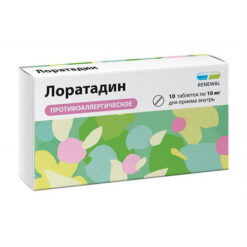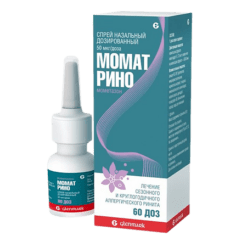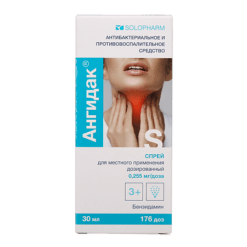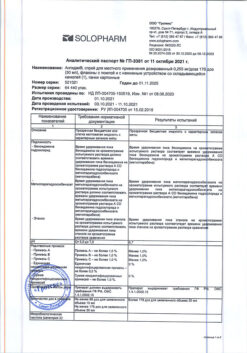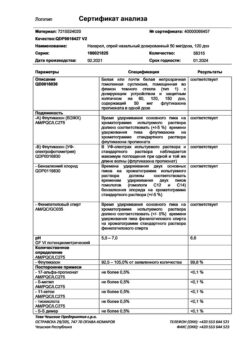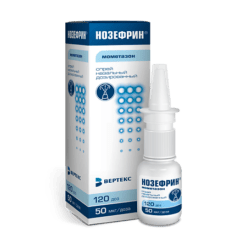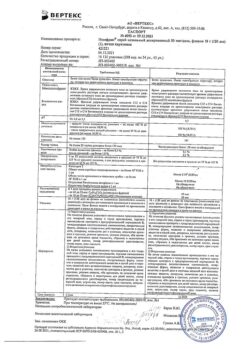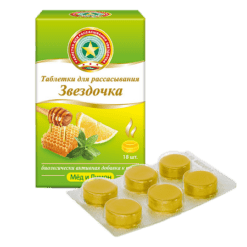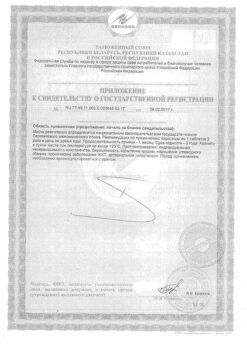No products in the cart.
Nasol Advance, spray 0.025 mcg/dose 10 ml
€7.71 €6.75
Description
Vasoconstrictor for local use in ENT practice.
Oxymetazoline hydrochloride causes vasoconstriction of mucous membranes of the nose, sinuses and Eustachian tube, which reduces their swelling and leads to relief of nasal breathing. Nasal breathing is relieved within 5-10 min after injection into the nasal cavity and lasts up to 12 hours.
Menthol, camphor, eucalyptol have local antiedematous, anti-inflammatory and antiseptic effect, liquefy thick mucus and improve its outflow from the paranasal sinuses and also contribute to increase the duration of action of the drug.
Indications
Indications
Acute respiratory diseases with symptoms of rhinitis (runny nose), acute allergic rhinitis, exacerbation of vasomotor rhinitis, to restore drainage in case of inflammation of the paranasal sinuses (sinusitis), eustachitis, otitis media, to eliminate swelling before diagnostic manipulations in the nasal passages.
Pharmacological effect
Pharmacological effect
Oxymetazoline belongs to the group of alpha-agonists for topical use. Has a vasoconstrictor effect. When administered intranasally, it reduces swelling of the mucous membrane of the upper respiratory tract, which leads to easier nasal breathing and the opening of the mouths of the paranasal sinuses and eustachian tubes. The effect of the drug appears 10-15 minutes after use and lasts for 10-12 hours.
Special instructions
Special instructions
Use the recommended dosage without consulting a doctor for more than 3 days. Avoid getting the drug into your eyes. The drug affects vision and may reduce reaction speed.
To avoid the spread of infection, it is necessary to use the drug individually. With prolonged use (more than one week), symptoms of nasal congestion may recur.
Impact on the ability to operate machinery and other vehicles
During treatment, you should refrain from driving vehicles and engaging in other potentially hazardous activities that require increased concentration or psychomotor speed, as the drug may cause dizziness and other side effects that may affect these abilities.
Active ingredient
Active ingredient
Oxymetazoline
Composition
Composition
1 bottle contains:
Active substance:
oxymetazoline hydrochloride 0.025 mg;
Excipients:
benzalkonium chloride – 0.02 g;
racemic camphor – 0.17 g;
eucalyptol (cineole) – 0.17 g;
levomenthol – 0.17 g;
disodium edetate dihydrate – 0.1 g;
polysorbate 80 – 0.2 g;
propylene glycol – 10 g;
sodium hydrogen phosphate dihydrate – 0.06 g;
sodium dihydrogen phosphate dihydrate – 0.65 g;
concentrated hydrochloric acid – 0.003 g;
purified water – 89.711 g.
Pregnancy
Pregnancy
Use during pregnancy and breastfeeding is only possible if the intended benefit to the mother outweighs the possible risk to the fetus or infant.
Caution should be exercised in the presence of hypertension or signs of decreased placental blood flow.
Frequent or long-term use of the drug in large doses may lead to a decrease in placental blood flow.
Contraindications
Contraindications
Hypersensitivity to oxymetazoline and other components of the drug;
angle-closure glaucoma;
surgical interventions on the dura mater (history);
condition after transsphenoidal hypophysectomy;
atrophic dry rhinitis;
inflammation of the skin and dry mucous membrane of the vestibule of the nose;
children under 12 years of age;
The drug should be used with caution in patients with diseases of the cardiovascular system (arterial hypertension, coronary heart disease, chronic heart failure, tachycardia, arrhythmias), with severe atherosclerosis, impaired carbohydrate metabolism (diabetes mellitus), with hyperthyroidism, porphyria, pheochromocytoma, chronic renal failure, prostatic hyperplasia (urinary retention), with increased intraocular pressure, with simultaneous use of monoamine oxidase inhibitors (MAOIs), including the period of the previous 2 weeks and within 2 weeks after their discontinuation, tricyclic antidepressants, maprotiline, bromocriptine, as well as other drugs that increase blood pressure, during pregnancy, during breastfeeding.
Side Effects
Side Effects
The following adverse reactions have been reported with the use of drugs
containing oxymetazoline, usually mild and transient. Because these reactions are reported in reference materials or are voluntarily reported in uncertain quantities by the public, their frequency cannot always be reliably estimated.
From the immune system: allergic reactions, angioedema.
From the skin and subcutaneous tissues: skin itching, exanthema.
From the nervous system: irritability, anxiety, dizziness or faintness, insomnia, drowsiness, trembling, headache, hallucinations (especially in children).
From the senses: blurred vision.
From the cardiovascular system: tachycardia, palpitations, increased blood pressure.
From the respiratory system: burning and tingling sensation in the nasal cavity,
sneezing, increased nasal discharge, increased nasal congestion, dryness or atrophy of the nasal mucosa, dry mouth, irritation of the nasal mucosa and throat, nosebleeds.
From the digestive system: nausea.
From the musculoskeletal system and connective tissue: convulsions (especially in children).
General disorders: weakness, fatigue.
Benzalkonium chloride, which is part of the drug, may cause irritation of the nasal mucosa.
Interaction
Interaction
When used simultaneously with MAO inhibitors and tricyclic antidepressants, an increase in blood pressure may be observed. The drug slows down the absorption of local anesthetic drugs and prolongs their effect. Co-administration of other vasoconstrictor drugs increases the risk of side effects.
Overdose
Overdose
Clinical signs of intoxication with imidazole derivatives may be nonspecific and unclear, as phases of hyperactivity are followed by phases of depression of the central nervous system, cardiovascular system and respiratory systems.
In case of an overdose or accidental ingestion of the drug, the following symptoms may develop: constriction or dilation of the pupil, nausea, vomiting, sweating, pallor, cyanosis, fever, spasms, tachycardia, arrhythmia, increased blood pressure, shortness of breath, cardiac arrest, pulmonary edema, anxiety, anxiety, agitation, mental disorders, hallucinations, convulsions, depression of the central nervous system (lethargy, drowsiness, decreased body temperature, bradycardia, decreased blood pressure, respiratory arrest and coma).
Treatment is symptomatic; in case of accidental ingestion – gastric lavage, taking activated charcoal. Non-selective blockers, such as phentolamine, may be used to reduce high blood pressure.
Storage conditions
Storage conditions
At a temperature not exceeding 25 °C.
Keep out of the reach of children.
Shelf life
Shelf life
3 years.
Do not use after expiration date.
Manufacturer
Manufacturer
Instituto de Angeli S.r.L., Italy
Additional information
| Shelf life | 2 years. |
|---|---|
| Conditions of storage | The drug should be stored in a dry place, protected from light, out of the reach of children, at 2° to 30°C. |
| Manufacturer | Bayer Bitterfeld GmbH, Germany |
| Medication form | dosed nasal spray |
| Brand | Bayer Bitterfeld GmbH |
Related products
Buy Nasol Advance, spray 0.025 mcg/dose 10 ml with delivery to USA, UK, Europe and over 120 other countries.



